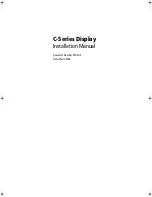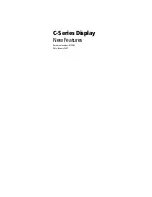
JP14-R-LP & JP14-Q-LP F
ALCOM
GPS R
ECEIVERS
V
ERSION
1.0.0
10 FIRST STEPS TO MAKE IT WORK
Figure 12
:
The minimum hardware interface of JP14-R-LP/Q-LP to get started.
The same set up connection can also be made to the GPS receiver, but take into
consideration the allocation of the receiver’s pins (refer to the Tables 1 and 2).
Antenna
:
The antenna connection is the most critical part of PCB routing.
Before placing the JP14 on the PCB, secure that the connection
to the antenna signals is routed. In order to make it properly
functional, a control impedance line has to connect the RF_IN
signal with antenna feed points or antenna connector,
respectively. The routing on the PCB depends on your choice.
Power
:
The input power is also very important as far as the minimum and
maximum voltage is concerned. The power supply of JP14 family
has to be a single voltage source of VCC at 3.3 VDC
±
5 %. Please,
connect GND pins to ground, and connect the lines, which
supply the VCC pin to +3.3 V, properly. If they are correctly
connected, the board is full powered and the unit begins
obtaining its position fix.
Serial
Interface
:
The JP14 family
provides two serial interfaces. Each interface is
provided with two wires the SDI1 and SDO1 lines for the first serial
interface (port A) and SDI2 and SDO2 lines for the second serial
interface (port B). The current firmware does not support DGPS
correction data. These pins are 3.3 V CMOS compatible. In order
to use different voltage levels, an appropriate level shifter has to
be used.
E.g. in order to provide RS232 compatible levels use the 3 V
compatible MAX3232 transceiver from Maxim or others based on
the required levels. The GPS data will be transmitted through port
A (first serial port), if an active antenna is connected, which has a
good view to sky. Pull-up (100 kΩ) to the unused SDI inputs.
Active Antenna Bias Voltage:
The output voltage at the antenna cable can be
used to power the bias voltage of the antenna, provided can
This confidential document is the property of FALCOM and may not be copied or circulated without permission.
Page 31



































